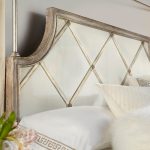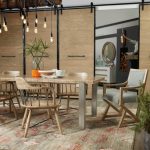In my last post, I talked about the different types of wood used and some of the terminology thrown around in the furniture world. Today I’ll tell you a bit about the rest of the process of constructing wooden furniture, and hopefully it will help you make an informed decision before you buy. (Incidentally, if you have any questions, feel free to write/comment and I’ll get back to you!)
How is the furniture finished?
Clear finishes allow the wood’s natural markings and grain to show, while stains and painted finishes alter the wood’s appearance. Elaborate finishes are used to achieve a weathered or aged look. Gleaming, polished finishes are often used for more contemporary pieces.
Naturally, more complex finishes add significantly to the cost of the furniture. Keep in mind that a piece described as having a “cherry finish” may not necessarily be constructed of cherry wood. It may simply refer to the color of the stain applied or even to the color of an artificial surface.
Examine the joints.
A joint is the critical area where two pieces of wood are joined together. The strength of a joint determines the stability and durability of furniture. The best joinery (such as dovetails or mortise-and-tenon joints) is also glued, locking the pieces together and increasing glued surface areas. Corner blocks glued into corners add even more stability.
• Mortise and tenon: The end of one of the pieces (tenon) is inserted into a hole cut in the other member (mortise).
• Dove-tailing: A series of pins are cut to extend from the end of one board and interlock with a series of tails cut into the end of another board.
Make sure drawers have smooth and easy glides and stops, have dust panels and are smooth and snag-free inside. Make sure doors swing open easily without squeaking or rubbing, and that long doors are attached with sturdy hinges. Learn more about drawer construction in the Quality Cues section of our website.
http://www.hookerfurniture.com/images/why_buy/quality_story.pdf)
Check overall quality.
When shopping for wood furniture, be sure to open the drawers, look underneath the chairs and tables, and jiggle the furniture a bit to make sure it’s stable. Check that the piece looks finished and secure, not wobbly, and without any drips or bubbles or extra glue. Finishes, veneers and edges should be smooth — there should be no splinters or cracks in the wood. All hardware should be strong, firmly attached and lacking rough edges.
Obviously, if you’re buying furniture in a box that you have to put together at home, you can’t be as sure of how the piece will actually look in your home or the quality of its construction. Just remember this: a good piece of wooden furniture not only is beautiful, but it will stand the test of time by its durability and applicability in many different situations.
Think about it. How many times have you bought something cheap, only to use it for a couple years then throw it out for something new? Isn’t it better in the long run to buy quality over price? What do you think? Let us know with your comment.












{ 2 comments… add one }
I like this concept. I visited your blog for the first time and just been your fan. Keep posting as I am gonna come to read it everyday.
Fire Extinguishers for Sale Hello I Love your blog Good article thanks for sharing